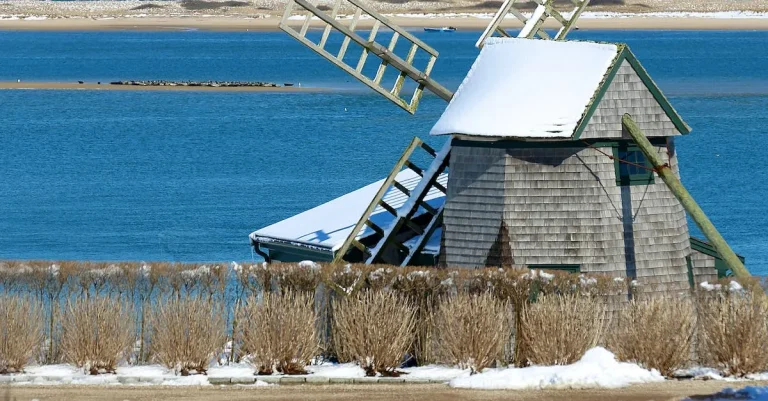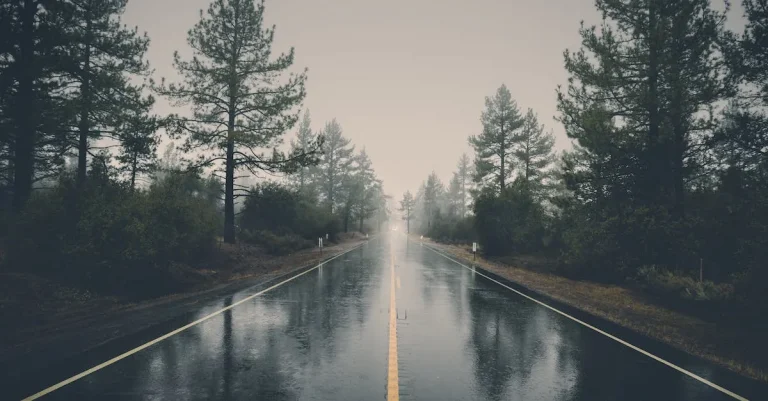Does It Snow In Texas?
Texas is known for its hot and humid climate, but many are surprised to learn that it does occasionally see snowfall during the winter months. If you’ve ever wondered, ‘Does it snow in Texas?’ read on to learn all about the Lone Star State’s rare snow events.
If you’re short on time, here’s a quick answer to your question: Yes, it does snow in parts of Texas when cold air masses move down from the north and combine with Gulf moisture. However, significant snowfall is uncommon across much of the state.
Texas Climate and Geography
Location and Size
Texas, the second-largest state in the United States, is located in the Southern part of the country. It shares borders with Mexico to the south, New Mexico to the west, Oklahoma to the north, and Louisiana and Arkansas to the east.
With an area of over 268,000 square miles, Texas encompasses a diverse range of landscapes and climate zones.
Climate Variations Across the State
Texas experiences a variety of climate types due to its large size and geographical features. The state can be broadly divided into four climate regions: the Gulf Coast, the Central Plains, the Trans-Pecos region, and the Panhandle Plains.
The Gulf Coast region, located in the southeastern part of the state, enjoys a humid subtropical climate. This means that it has hot and humid summers, mild winters, and ample rainfall throughout the year.
The Central Plains region, which covers the central part of Texas, has a transitional climate between the Gulf Coast and the more arid regions to the west. Summers are hot and dry, while winters are mild, with occasional cold fronts bringing cooler temperatures.
The Trans-Pecos region, located in the western part of Texas, is characterized by a desert climate. This region experiences hot summers and mild winters, with very little rainfall throughout the year.
The Panhandle Plains, situated in the northwestern part of the state, has a semiarid climate. Summers are hot, and winters can be cold, with occasional snowfall. The region experiences less rainfall compared to the Gulf Coast region.
It is important to note that while Texas generally has a warm and sunny climate, it is a large state with diverse landscapes, and climate variations can occur even within smaller regions. For example, the mountainous regions of West Texas may experience cooler temperatures and more precipitation compared to other parts of the state.
So, does it snow in Texas? While snowfall is not a common occurrence in most parts of the state, Texas does experience snowfall in certain regions, particularly in the Panhandle Plains and the mountainous areas of West Texas.
The frequency and amount of snowfall vary from year to year and can range from a light dusting to significant accumulations.
To get accurate and up-to-date information on the weather and climate in specific regions of Texas, it is recommended to refer to the National Weather Service website (www.weather.gov) or local weather forecast sources.
Weather Patterns That Produce Snow
While Texas is known for its warm climate and scorching summers, it may surprise some to learn that snowfall is not as rare as one might think. Although not as frequent or heavy as in northern states, Texas does experience snowfall in certain regions during specific weather patterns.
Cold Fronts
One of the primary weather patterns that can bring snow to Texas is the arrival of a cold front. When a mass of cold air moves southward into the state, it can collide with warm, moist air from the Gulf of Mexico.
This collision often leads to the formation of precipitation, including snowfall in colder regions of the state. The intensity and duration of the cold front will determine the amount of snowfall received.
Cold fronts are most common during the winter months, particularly in northern and western regions of Texas. Areas such as the Panhandle and the Davis Mountains have a higher likelihood of experiencing snowfall due to their higher elevations and colder temperatures.
El Niño
Another weather pattern that can contribute to snowfall in Texas is the El Niño phenomenon. El Niño occurs when the equatorial waters of the Pacific Ocean become unusually warm, which can impact global weather patterns.
In Texas, El Niño events are associated with cooler and wetter conditions, increasing the chances of snowfall in certain areas.
During an El Niño year, the southern parts of Texas, including cities like Houston and Corpus Christi, have a higher likelihood of experiencing snowfall. However, it’s important to note that the effects of El Niño can vary from year to year, and not every El Niño event will result in snowfall.
Upper Level Storms
Upper level storms, also known as mid-latitude cyclones or troughs, can also bring snow to Texas. These storms typically form in the mid-levels of the atmosphere and can bring colder air masses and precipitation to the state.
When an upper level storm system interacts with moist air from the Gulf of Mexico, it can create the perfect conditions for snowfall. The severity and duration of the storm will determine the amount of snowfall received in different regions of Texas.
It’s worth noting that while Texas does experience snowfall during these weather patterns, it is generally less frequent and less heavy compared to states in the northern parts of the United States. However, when snow does fall in Texas, it often brings excitement and joy to both residents and visitors alike.
To stay updated on the latest weather conditions and snowfall forecasts in Texas, you can visit the National Weather Service website at www.weather.gov.
Notable Texas Snowstorms
December 2004
One of the most memorable snowstorms in Texas occurred in December 2004. This storm swept across the state, blanketing many areas with several inches of snow. Cities like Dallas, Austin, and Houston experienced rare snowfall, causing excitement and awe among the residents.
The snowfall in Dallas reached a total of 12.5 inches, breaking the previous record set in 1929. This unexpected snowstorm brought joy to both young and old, turning the streets into winter wonderlands and prompting impromptu snowball fights and snowman building competitions.
February 2021
Another significant snowstorm hit Texas in February 2021, making headlines across the country. This winter storm, known as Winter Storm Uri, brought extreme cold temperatures and heavy snowfall to the state. The storm caused widespread power outages, water disruptions, and transportation issues.
Many cities, including Houston and Austin, experienced record-breaking low temperatures. The snowfall in some areas exceeded a foot, leading to icy roads and dangerous conditions. It was a stark reminder that even though snow in Texas is rare, it can still have a significant impact on the daily lives of its residents.
Historic Snowfalls
Texas is known for its typically mild winters, but there have been a few historic snowfalls throughout the state’s history. For example, in 1985, the Panhandle region experienced a severe blizzard that dumped up to 2 feet of snow.
This snowfall paralyzed the area and forced many businesses and schools to close. In 1929, the aforementioned snowfall in Dallas set a record that stood for over 75 years. These extreme snow events serve as reminders that Texas, despite its reputation for warm weather, is not immune to the occasional winter wonderland.
For more information on Texas snowstorms and weather patterns, visit the National Weather Service website.
Cities That Get Snow
Dallas-Fort Worth
Dallas-Fort Worth is one of the cities in Texas that occasionally experiences snowfall during the winter months. While it may not get as much snow as some other parts of the country, residents of this metropolitan area are no strangers to waking up to a winter wonderland.
On average, Dallas-Fort Worth receives about 2-3 inches of snow per year, with the most significant snowfalls occurring in January and February. It’s important to note that snowfall in this region can vary greatly from year to year, so it’s always a surprise when the flakes start falling.
Austin
Austin, the capital city of Texas, is located in the central part of the state and generally experiences mild winters. However, it is not uncommon for the city to see a light dusting of snow during the colder months.
While snowfall in Austin is relatively rare, it does happen from time to time, usually in December or January. The city’s residents often take advantage of these snowy days by building snowmen, having snowball fights, and enjoying the magical scenery.
Houston
Houston, known for its hot and humid climate, is not typically associated with snow. However, every few years, the city experiences a rare snow event that surprises both residents and visitors alike. The last significant snowfall in Houston occurred in December 2017, when the city was blanketed with several inches of snow, creating a picturesque scene.
Although snowfall in Houston is infrequent, it is an exciting and memorable event for those lucky enough to witness it.
San Antonio
San Antonio, located in south-central Texas, is another city that occasionally gets snow. While snowfall is not a regular occurrence, the city has seen several significant snow events in the past. The most recent notable snowfall in San Antonio happened in December 2017, when the city experienced a rare white Christmas.
The snowfall brought joy and excitement to residents, who took the opportunity to build snowmen and enjoy winter activities usually associated with colder climates.
El Paso
El Paso, located in the westernmost part of Texas, is closer to the mountains and has a higher chance of experiencing snow compared to other cities in the state. Snowfall in El Paso is more common during the winter months, with an average of 7-8 inches of snowfall per year.
The city’s residents are accustomed to snowy winters and often engage in activities like skiing, snowboarding, and sledding in nearby mountain resorts such as Ski Apache in New Mexico.
Average Snowfall Totals
When it comes to snowfall, Texas is not typically the first state that comes to mind. However, contrary to popular belief, snow does fall in certain parts of the Lone Star State. While it may not be as common or as heavy as in northern states, Texas does experience snowfall during the winter months.
Snowfall in West Texas
West Texas is known for its wide open spaces and breathtaking landscapes, but it is also home to some of the highest snowfall totals in the state. Cities such as Amarillo, Lubbock, and El Paso receive an average of 10 to 15 inches of snow each year.
These areas are more prone to cold temperatures and winter storms, which contribute to the higher snowfall totals.
Snowfall in the Panhandle Region
The Panhandle region of Texas, located in the northern part of the state, also sees its fair share of snowfall. Cities like Wichita Falls, Abilene, and Midland receive an average of 3 to 5 inches of snow annually.
While this may not seem like much compared to other parts of the country, it is still enough to create a winter wonderland for residents and visitors alike.
Snowfall in Central and East Texas
Central and East Texas, including cities like Austin, Houston, and Dallas, do not typically experience as much snowfall as other regions in the state. However, there have been instances where these areas have seen snowflakes falling from the sky.
On average, these areas receive less than an inch of snow per year.
It is important to note that snowfall totals can vary greatly from year to year. Some winters may see heavier snowfall, while others may see little to no snow at all. Weather patterns and climate change can also play a role in determining snowfall amounts.
If you’re planning a trip to Texas during the winter months and are hoping to experience snow, your best bet would be to visit the western or northern parts of the state. However, it’s always a good idea to check the weather forecast before making any travel plans.
For more information on snowfall totals in Texas, you can visit the National Weather Service website, where you can find up-to-date weather information and historical data.
Preparing for Snow in Texas
Driving Safely
While snow may be a rare occurrence in Texas, it is still important to be prepared for winter weather. When snowfall does happen, it can create hazardous driving conditions. It is crucial to drive safely and cautiously to avoid accidents. Here are some tips to keep in mind:
- Reduce your speed and increase your following distance to allow for extra stopping time.
- Accelerate and decelerate slowly to maintain traction on the slippery roads.
- Avoid sudden braking or sharp turns, as this can cause your vehicle to skid.
- Make sure your vehicle is properly maintained, with good tires and functioning brakes.
By following these guidelines, you can help ensure your safety and the safety of others on the road during snowy conditions in Texas.
Protecting Pipes
One of the main concerns during snowy weather in Texas is the potential for frozen pipes. Freezing temperatures can cause pipes to burst, leading to costly water damage. To protect your pipes, here are a few steps you can take:
- Insulate exposed pipes with foam or pipe insulation to prevent freezing.
- Allow faucets to drip slightly to relieve pressure and prevent freezing.
- Keep cabinets under sinks open to allow warm air to circulate around the pipes.
- If you suspect a frozen pipe, turn off the main water supply and contact a professional plumber.
By taking these precautions, you can minimize the risk of frozen pipes and potential damage to your home during snowy conditions in Texas.
Staying Warm
Snow in Texas often brings frigid temperatures, so it’s important to stay warm and cozy during these chilly times. Here are some tips to help you stay warm:
- Dress in layers to trap heat and insulate your body.
- Use blankets and extra insulation to keep your home warm.
- Drink warm beverages to raise your body temperature.
- Keep doors and windows closed to prevent drafts.
Remember, even though snow in Texas may be a novelty, it’s still essential to take the necessary precautions to stay safe and comfortable during these winter weather events.
Conclusion
While significant snowfall is rare across most of Texas, the state does see occasional snow flurries and accumulation when the ingredients come together just right. The northern and western parts of Texas get more snow than the southern and eastern regions. With its variable climate and geography, prepare for the possibility of snow, even in the Lone Star State.
So in summary – yes, it does snow in Texas once in a while, especially when cold air invades from the north. The snowfalls may not be frequent or heavy, but they serve as a reminder that winter can arrive even in the warmer parts of the United States.








